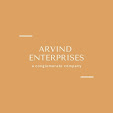# Narendra Modi
 |
| (Narendra Modi) |
## Early Life and Entry into Politics
**Full Name:** Narendra Damodardas Modi
**Date of Birth:** September 17, 1950
**Birthplace:** Vadnagar, Bombay State (now Gujarat), India
Narendra Modi, the 14th and current Prime Minister of India, was born into a humble family in Vadnagar. His early life was marked by involvement in the Rashtriya Swayamsevak Sangh (RSS) during his teenage years. Modi's political journey began as a member of the Akhil Bharatiya Vidyarthi Parishad (ABVP), the student wing of the RSS.
In 1987, he joined the Bharatiya Janata Party (BJP) and rapidly rose through the ranks due to his organizational skills and dedication. Modi played key roles in various state-level campaigns and became the Chief Minister of Gujarat in 2001.
## Chief Minister of Gujarat (2001-2014)
### Economic Development
Modi's tenure as Chief Minister of Gujarat was marked by a focus on economic development. The state experienced significant growth in industries such as petrochemicals, agriculture, and information technology. His leadership was praised for attracting investment and fostering a business-friendly environment.
### Controversial Legacy
However, Modi's governance during the 2002 Gujarat riots drew widespread criticism. The communal violence resulted in significant loss of life, and Modi faced accusations of inadequate response. Despite this, he continued to remain popular within the BJP.
## Prime Ministerial Journey
### 2014 General Elections
In 2014, Narendra Modi led the BJP to a historic victory in the general elections, securing a majority in the Lok Sabha. He became the 14th Prime Minister of India, emphasizing a vision for development, anti-corruption measures, and national security.
### Initiatives and Policies
Modi's tenure as Prime Minister has been characterized by several initiatives, including the Swachh Bharat Abhiyan (Clean India Campaign), demonetization, and the Goods and Services Tax (GST). He has also focused on infrastructure development, rural electrification, and the "Make in India" campaign to boost manufacturing.
## Re-election in 2019
### Pulwama Attack and Balakot Strikes
In 2019, following the Pulwama terrorist attack, Modi's government conducted airstrikes in Balakot, Pakistan, escalating tensions between the two nations. The BJP's strong stance on national security contributed to their re-election victory.
### Ongoing Leadership
Modi's second term has seen continued efforts in economic reform, social welfare programs, and navigating the challenges posed by the COVID-19 pandemic. His leadership style, often characterized by a strong central authority, has both supporters and critics.
## Personal Life and Ideology
### Simplicity and Discipline
Narendra Modi is known for his simple lifestyle and disciplined work ethic. His personal narrative, rising from a modest background to the highest political office, resonates with many Indians.
### Hindutva and Nationalism
Modi's political ideology aligns with Hindutva, emphasizing the cultural and religious identity of India. His leadership style reflects a commitment to nationalism and a strong, assertive role for India on the global stage.
## Conclusion
Narendra Modi's political journey is a complex narrative, marked by both admiration and criticism. His impact on India's economic and political landscape is undeniable, and his leadership continues to shape the nation's trajectory. As one of the most influential figures in contemporary Indian politics, Narendra Modi's legacy will be subject to ongoing analysis and debate.







0 Comments